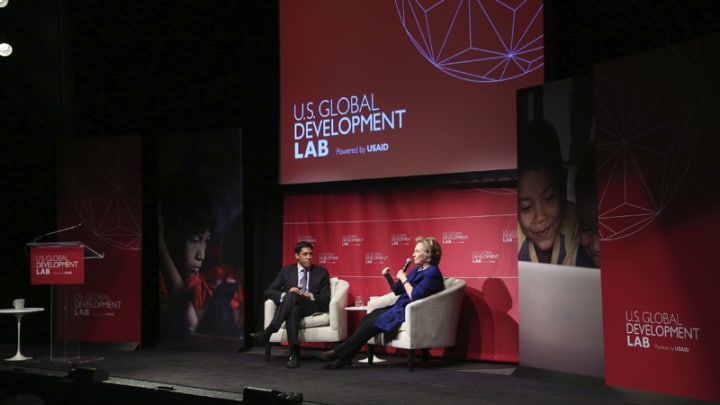
EDITOR’S NOTE: While the Global Development Lab remains a work in progress, its approach to innovation in development is a model to consider incorporating into the next stage of development funding, argues Rachel Vogelstein, director and senior fellow for women and foreign policy at the Council on Foreign Relations.
Amid final negotiations over the sustainable development goals, both private and public sector development funders are turning their attention to the gap between this ambitious agenda and available resources. Last week, government, business and NGO representatives gathered in Addis Ababa, Ethiopia, for the third International Conference on Financing for Development to devise ways to support this new development agenda. One proposal is to support innovation to fuel cost-effective approaches to development.
On the eve of the Addis conference, I hosted a roundtable at the Council on Foreign Relations with a pioneer of development innovation: Ann Mei Chang, executive director of the Global Development Lab at the U.S. Agency for International Development. Launched in April 2014, the Global Development Lab is USAID’s newest entity, designed to fund breakthrough innovations to “accelerate development impact faster, cheaper and more sustainably.” Such a broad mandate requires both flexibility and a willingness to fail — two characteristics not traditionally associated with government agencies.
Ann Mei Chang's vision for USAID's Global Development Lab
The U.S. Global Development Lab has not been authorized by Congress yet, but it already has an executive director. We spoke with Ann Mei Chang to learn about her vision for innovation, partnership, and failure at USAID's science and technology incubator.
The Global Development Lab takes a venture capital-style approach to funding development. It crowdsources solutions from around the globe, including from individuals and organizations that have never before worked with USAID. The lab makes high-risk, low-cost investments in projects, with the potential to increase funding for those that show promise. By experimenting and “failing small,” the lab can take on more risk than the average government aid funder.
Some have expressed skepticism about the power of innovation to accelerate development gains. Bill Gates, for example, has criticized models that emphasize tech innovations too heavily as potentially distracting from perpetual development challenges, such as a lack of sanitation infrastructure or access to basic health services.
In fact, while the Global Development Lab does support projects that are technically advanced, some of the most successful initiatives simply improve upon common solutions and existing knowledge by permitting the flexibility to innovate. For example, in one lab-funded project, the nongovernmental organization Evidence Action explored how to enhance the uptake of chlorine to disinfect drinking water and prevent diarrhea, which is the cause of death for an estimated 760,000 children under 5 each year. Despite widespread acknowledgment of chlorine’s efficacy, uptake stands at less than 10 percent around the world. In an attempt to improve this number, innovators from Evidence Action came up with an idea called the chlorine dispenser, a low-cost machine installed in areas with community water services. With the push of a button, the dispenser distributes an appropriate amount of chlorine into a bucket or jerrycan. This simple innovation has already had an outsized impact: In areas where it is operational, including Kenya, Malawi and Uganda, it has increased the use of chlorine to nearly 50 percent.
Other projects funded by the lab stem from unlikely sources and test unexpected methods. One intervention dreamed up by a car mechanic in Argentina — called the Odón Device — became a potentially lifesaving tool to assist with obstructed labor. The device, which is now in development at Becton, Dickinson and Company, features a plastic bag that inflates around the baby’s head in the womb and is pulled until it emerges. The innovator, Jorge Odón, first thought of the idea after watching a YouTube video that showed how to extract a cork stuck inside an empty wine bottle. This device is considered safer than vacuum assist and forceps, which are even more dangerous when used by inexperienced practitioners in low-resource settings.
While these out-of-the-box ideas have the potential to accelerate development gains, one of the lab’s greatest challenges is how to measure impact — particularly in areas such as democracy, human rights and governance. The lab is piloting sensors and mobile surveys in an attempt to obtain timely and gender-disaggregated data, but more work is certainly needed. Though the lab is still a work in progress, its approach to innovation in development is a model to consider incorporating into the next stage of development funding.
Edited for style and republished with permission from the Council on Foreign Relations. Read the original article.
Join Devex to network with peers, discover talent and forge new partnerships in international development — it’s free. Then sign up for the Devex Impact newsletter to receive cutting-edge news and analysis at the intersection of business and development.




